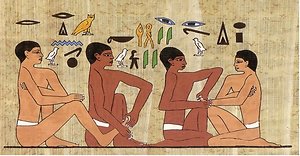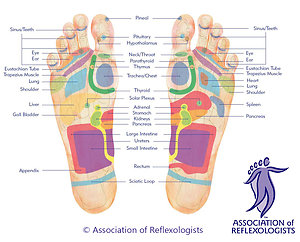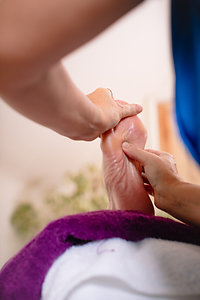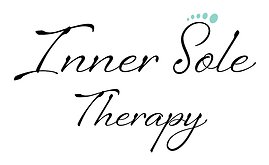What is Reflexology?
Reflexology is a deeply relaxing, safe complimentary therapy suitable for the whole family throughout every stage of life. It is the technique of applying controlled pressure to reflex points on the feet and hands that correspond to organs, glands and skeletal structures within the body to bring about a state of deep relaxation and stimulate the body’s own healing process.
Reflexology does not aim to diagnose or cure illness but rather to promote the body's powerful self-healing capability and improve physical, emotional and spiritual wellbeing. It helps us return to a state of natural balance.
How Reflexology Works
Our feet mirror our body and often reflect the condition of our health. When pressure is applied to reflex points on our feet and hands during a treatment systems of the body are stimulated and a nerve reaction is created in the body. This reaction encourages: improved circulation, the release of toxins, the balancing of our hormones, an increase in energy, a reduction of pain and inflammation and the balancing of our emotions.
Reflexology could help to:
• Reduce stress by inducing deep relaxation
• Increase immunity
• Improve circulation
• Cleanse the body of toxins and impurities
• Revitalise energy
• Balance hormones
• Relieve pain
• Aid injury and post-operative healing
• Improve common ailments
Reflexology should not be used as an alternative to seeking medical advice. Reflexologists cannot cure or diagnose illness but instead work alongside conventional healthcare to promote better health for our clients. In fact, we will regularly ask clients to gain the consent of their GP or Consultant before commencing a treatment plan, or refer clients to other health professionals including GP’s, where appropriate.
Who can benefit from Reflexology?
Everyone can benefit from babies to the elderly. Reflexology is a safe, natural therapy that can be particularly beneficial for those looking to combat the effects of stress. It can help before and after surgery to minimise trauma to the body and help recovery time.
Reflexology is greatly beneficial before, during and after pregnancy. Continued treatment after birth could help encourage a speedy recovery and most importantly, some much needed time out for a new mum. Positive results have been achieved for people with learning disabilities, aggressive behavior and hyperactivity. Children and babies love it.
Following a course of treatments clients often remark that they feel better and some report that an ailment has disappeared. The holistic nature of reflexology benefits the whole body, mentally, physically, emotionally and spiritually.
History of Reflexology
The origins of reflexology date back to the Ancient Egyptians, over 4,000 years ago. A wall painting from the Mastaba of Ankhmahor, dating from 2330 BC depicts what is believed to be the earliest example of reflexology. However, it wasn’t until the 20th Century that a system of reflexology was developed in the West.
Dr. William Fitzgerald, an American surgeon, discovered that applying pressure in one area of the patient’s body could relieve pain in another. In 1917 he divided the body into ten longitudinal sections, which formed the basis of modern reflexology’s zone therapy.
In the early 1930’s Eunice Ingram, known as the “mother of reflexology”, worked on hundreds of patients until she was able to determine that the reflex points on the feet were an exact mirror of the organs of the body. Ingham developed the first charts mapping the organs of the body on the feet and a new technique using thumbs and fingers to apply pressure to the feet.



